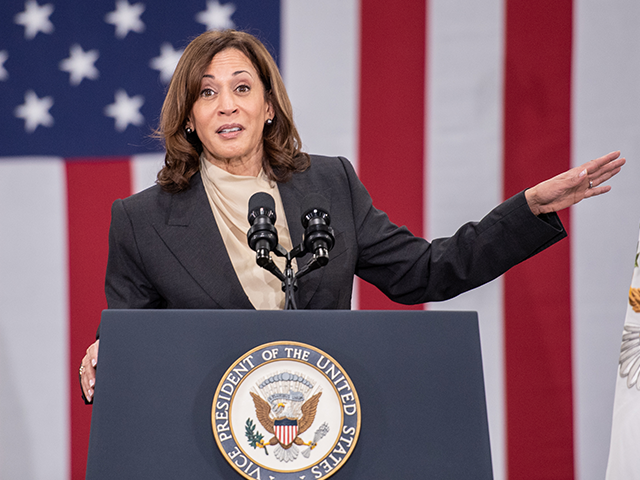Kamala Harris’s Manufacturing Boom Erased by Revised Jobs Data
Kamala Harris’s manufacturing boom isn’t working out.
Harris and President Joe Biden have been promising a high tech jobs boom for years. More recently, they’ve taken to claiming that the manufacturing boom is already underway.
“Donald Trump tries to claim he brought back American manufacturing. The fact is, under Donald Trump, America lost tens of thousands of manufacturing jobs. And more than 1,000 factories closed under his watch. The facts. Meanwhile, President Biden and I have created nearly 800,000 new manufacturing jobs. So much so that it has been described as a manufacturing boom,” Harris said in North Carolina last month.
The trouble is that manufacturing employment is shrinking, and the manufacturing sector has been contracting.
The Labor Department on Wednesday said that employers appear to have added 818,000 fewer jobs in the 12 months through March of this year than earlier estimated. This included a downward revision of 115,000 jobs in manufacturing.
The earlier estimates had indicated that the economy had added 19,000 manufacturing jobs over that period. After the revision, it appears that the economy shed 96,000 manufacturing jobs.
Harris’s claim that 800,000 manufacturing jobs have been added during the Biden administration was never accurate because it misleadingly measured the baseline from the depths of the pandemic. Many of the jobs were in fact not new jobs but simply jobs regained after lockdowns were lifted and the economy was reopened.
Through March, the record now stands at just 564,000 jobs—even using that misleading baseline. If we correct the baseline to February 2020, just before the pandemic hit the economy, then the gain is just 56,000. If we measure it against peak factory employment under Trump, in early 2019, the gain is just 8,000 jobs.
A Huge Bill for Tiny Results
These must be the costliest 8,000 jobs ever added to the economy. Added together, the Inflation Reduction Act, the Bipartisan Infrastructure Law (BIL), and CHIPS and Science Act (CHIPS Act) cost trillions of dollars. The Biden-Harris administration has claimed that spending under those laws has prompted hundreds of billions of dollars of private sector investment in manufacturing.
The manufacturing sector fell deeper into contraction in July, according to the Institute for Supply Management. It has been contracting for the last four straight months. In fact, apart from a brief expansion in March, the sector has contracted in every month for the last 21 months.
Manufacturing has been under pressure from high interest rates, which were raised by the Federal Reserve in an effort to contain inflation pushed higher by the massive deficit spending bills of the Biden-Harris administration. Even the approach of cuts from the Fed and the decline in longer-term borrowing rates, however, has not been enough to relieve the pressure on the sector.
While the Democrats gathered in Chicago tout job creation and investment, the reality is a sector that is shrinking rather than booming. The high costs associated with their legislative efforts have yet to deliver the promised returns, leaving the American manufacturing landscape in a precarious position.
In the end, the so-called manufacturing boom under the Biden-Harris administration appears to be more of a mirage than a reality. The challenges facing the sector, combined with the significant economic costs of the administration’s policies, suggest that the road to a true manufacturing resurgence will require a very different set of policies than Harris would bring to the presidency.

COMMENTS
Please let us know if you're having issues with commenting.